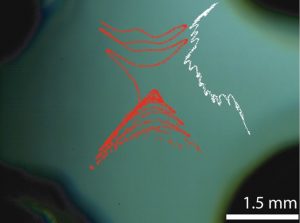
Multielectron bubbles (MEBs) are micron cavities in liquid helium containing few to millions of electrons pinned to the inside surfaces of the bubble and are predicted to be a promising candidate for the observation of quantum phase transitions in 2D. We have developed for the first time a method to trap the MEBs in a Paul trap and have made extensive studies on these objects over last few years, mostly focusing on the stability and dynamics of these charged bubbles near the lambda point. Very recently, we have discovered a new species of stable MEBs that contain less than ten electrons. These objects are formed due to a novel quantum mechanics dominated self-assembly process and can provide deep insight into the role of quantum fluctuations on the properties of interacting few body systems.
Our studies have suggested the possibility of reaching a unique density regime for the 2D electron layer inside the MEBs, which is large enough for the ordered electron lattice to melt through quantum fluctuations. Our present experiments are aimed towards observation of this 2D melting process, which will surely be a major contribution in the study of quantum phase transitions. Interestingly, the same experimental system has been predicted to be a promising candidate as candidates for quantum computing platforms, which is currently being investigated in our group.